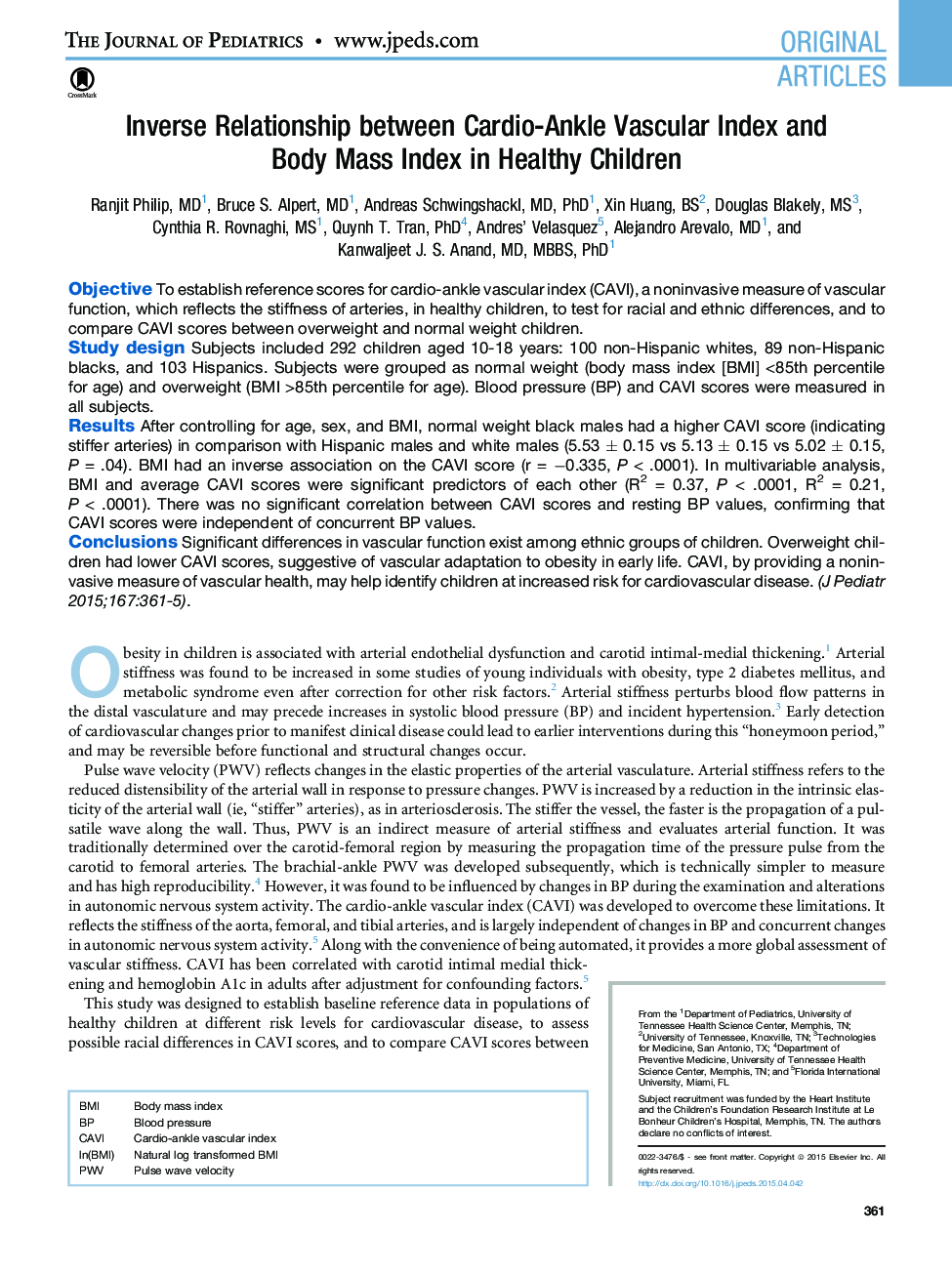| Article ID | Journal | Published Year | Pages | File Type |
|---|---|---|---|---|
| 6220485 | The Journal of Pediatrics | 2015 | 6 Pages |
ObjectiveTo establish reference scores for cardio-ankle vascular index (CAVI), a noninvasive measure of vascular function, which reflects the stiffness of arteries, in healthy children, to test for racial and ethnic differences, and to compare CAVI scores between overweight and normal weight children.Study designSubjects included 292 children aged 10-18 years: 100 non-Hispanic whites, 89 non-Hispanic blacks, and 103 Hispanics. Subjects were grouped as normal weight (body mass index [BMI] <85th percentile for age) and overweight (BMI >85th percentile for age). Blood pressure (BP) and CAVI scores were measured in all subjects.ResultsAfter controlling for age, sex, and BMI, normal weight black males had a higher CAVI score (indicating stiffer arteries) in comparison with Hispanic males and white males (5.53 ± 0.15 vs 5.13 ± 0.15 vs 5.02 ± 0.15, P = .04). BMI had an inverse association on the CAVI score (r = â0.335, P < .0001). In multivariable analysis, BMI and average CAVI scores were significant predictors of each other (R2 = 0.37, P < .0001, R2 = 0.21, P < .0001). There was no significant correlation between CAVI scores and resting BP values, confirming that CAVI scores were independent of concurrent BP values.ConclusionsSignificant differences in vascular function exist among ethnic groups of children. Overweight children had lower CAVI scores, suggestive of vascular adaptation to obesity in early life. CAVI, by providing a noninvasive measure of vascular health, may help identify children at increased risk for cardiovascular disease.
